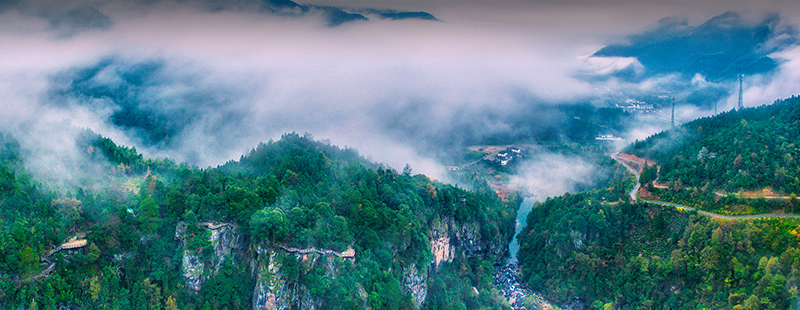Research and study activities
Release Date:2024-06-25 Source: Number of views:210
Research and study tours are a new teaching method and have received increasing attention in recent years. The Guniujiang Scenic Area in Shitie, Anhui is located in Shitie County in the southern part of Anhui Province, 20 kilometers away from the county seat of Shitie, Anhui. It is a comprehensive national nature reserve mainly focusing on forest ecosystems, which was approved by the State Council in 1988. It is called the "Green Natural Museum" by ecologists. In 2010, it was awarded as a national 4A-level scenic area. In 2017, it was designated as the first batch of provincial research and study tour practice bases by the Anhui Provincial Department of Education (document No. 83 of the Anhui Provincial Department of Education's Secretariat for Basic Education in 2017).
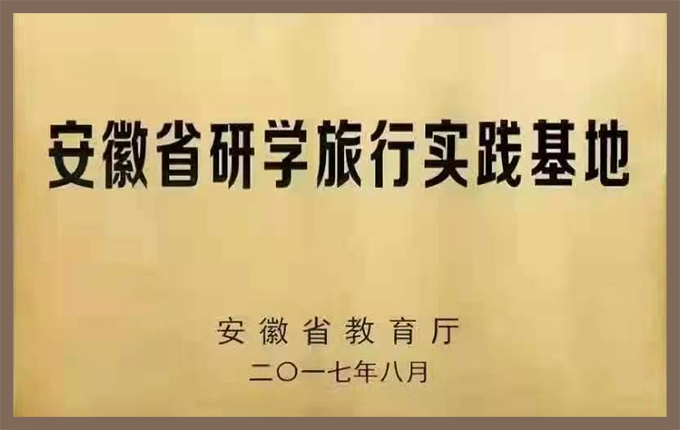
In 2020, it was approved as the first batch of municipal research and study practice education bases for primary and secondary school students in Chizhou City. The Guniujiang Scenic Area is reputed as the "Gene Bank of Animals and Plants in East China" and is affectionately called the "Green Natural Museum Without Walls" by ecologists. It has also been selected as the Scientific Investigation and Education Base for Chinese Youth. It is the top choice for many students' research and study trips.
Exploration of animals and plants
Guniujiang is the third highest peak in southern Anhui. The highest peak is 1,727.6 meters above sea level, and there are significant differences in soil properties. Looking from the bottom up, there are yellow-red soil zones, mountain yellow soil zones, mountain yellow-brown soil zones, and mountain meadow soil zones. Due to the differences in soil and altitude, the trees, flowers and plants that grow are also very different. However, it is precisely because of these differences that Guniujiang shows diversity and splendor. The soil provides favorable conditions for plant growth, and the soil also benefits from the coverage of forest vegetation and develops well, jointly maintaining the ecological balance of Guniujiang.

The Guniujiang in Shitie is a comprehensive national nature reserve mainly focusing on forest ecosystems, which was approved by the State Council in 1988. The total area of Guniujiang is 6,700 hectares. The vegetation coverage rate in the scenic area is as high as 98%, and it harbors a large number of biological species. According to statistics, there are 1,348 species of plants belonging to 726 genera in 230 families. There are a wide variety of biological species, among which 13 species of plants and 29 species of animals are under national key protection. The floristic components are complex and the ecological relationships are harmonious. It is a paradise for animals and plants and also a natural ecological museum. There are relict tree species that existed before the Tertiary Period, such as Chinese fir, Chinese yew, and Cephalotaxus fortunei. There are also 19 species of plants under national first-class, second-class and third-class protection, such as Liriodendron chinense, Emmenopterys henryi and Magnolia sieboldii.
Ginkgo biloba is a famous "living fossil" among plants. There are 29 species of animals under national first-class and second-class protection, such as clouded leopards, leopards and sika deer. In addition, there are abundant reptiles here. Among them, there are more than 26 species of snakes (such as Agkistrodon acutus and cobras), so it is called the "Kingdom of Snakes".
Geographical Changes
The Yanshan Movement between the Jurassic and Cretaceous periods laid the basic framework for the current landform of Guniujiang. During this period, the main peak of Guniujiang broke and uplifted again, accompanied by magma intrusion, forming the granite body of Guniujiang. Therefore, the mountains in Guniujiang are basically composed of this kind of rock. Of course, there are also quartz sandstone, slate, shale and so on. In the early crustal movements, some rock layers in Guniujiang fractured. As time passed, the stones on the rock layers fell off. After being scoured by water flow for a long time, countless stones of various shapes, sizes and as smooth as jade are scattered all over the river valleys in Guniujiang. The stones in Longmen Canyon have different postures and rich colors, with blackish-gray stones being the most numerous. They are metamorphic rocks. The main components of these stones are silicon dioxide and calcium carbonate, which are formed by the metamorphism of limestone. It can be said that they are carbonate substances that had been deposited in the Guniujiang area for a long time before it got rid of the encroachment of seawater.
Cultural Features
This place not only has an extremely beautiful ecological environment but also is renowned for producing outstanding people and has a profound cultural heritage. Wu Yingji, the leader of the Restoration Society in the late Ming Dynasty, a litterateur and a patriotic poet, once studied, sought knowledge, trained troops and resisted the Qing Dynasty here. Zheng Zhizhen, a great playwright in the Ming Dynasty, lived here and spent his entire life compiling the Mulian Opera "Mulian Rescues His Mother and Admonishes People to Do Good", which is hailed as a living fossil of Chinese drama. We can learn about the history of Yan Ziling, a hermit in the Eastern Han Dynasty, who refused to serve as an official in the imperial court. And in the history of the modern revolutionary struggle, the descendants of the Yan family adopted a positive attitude of "entering the world".
The Yan Family Ancient Village, the residence of the Yan family with a long history, is inhabited by the descendants of Yan Ziling, a hermit in the Eastern Han Dynasty. The village features white walls and gray tiles, and its layout presents the Huizhou style.
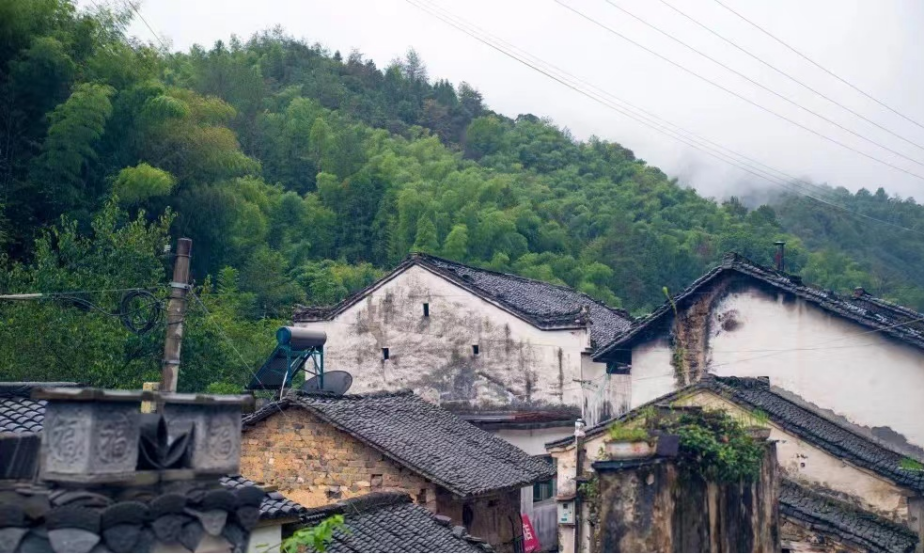
Not far away, there is an old house, which is the ancient mill. Inside it, there are stone mills and water-powered trip hammers. The stone mill is a tool that uses human power to grind grains into flour, while the water-powered trip hammer is a tool that utilizes water power to husk rice from paddy or process some other grain products. The old farm tool house is furnished with old-fashioned farm tools, such as plows, harrows, cultivators, spinning wheels, waterwheels, bailers and fans used for removing impurities from grains. Here, you can get to know the original farm tools, understand the history of farming and the process of agricultural development, as well as the long-standing agricultural civilization.
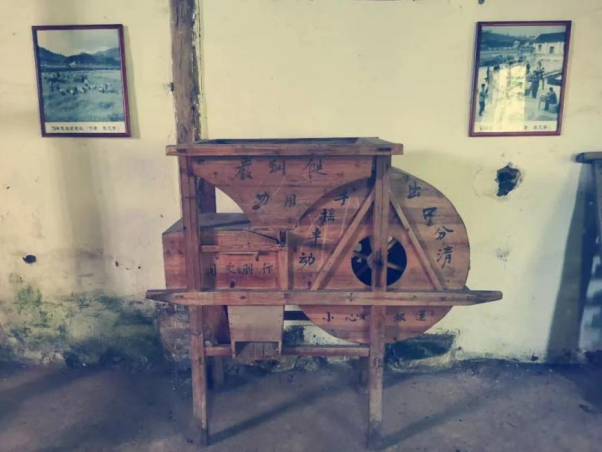

Pictures of previous research and study activities:

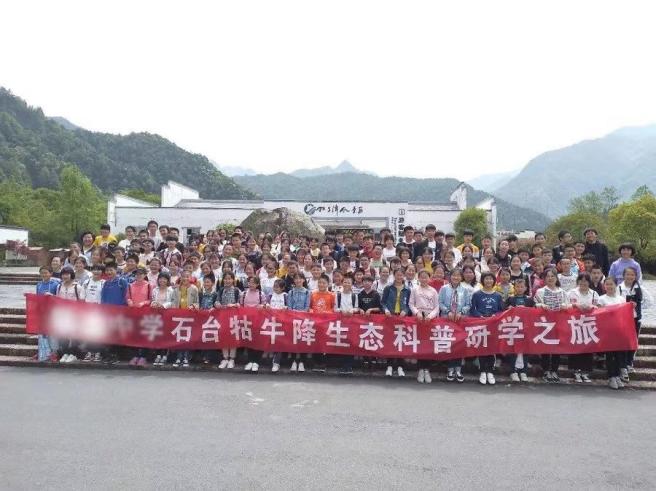
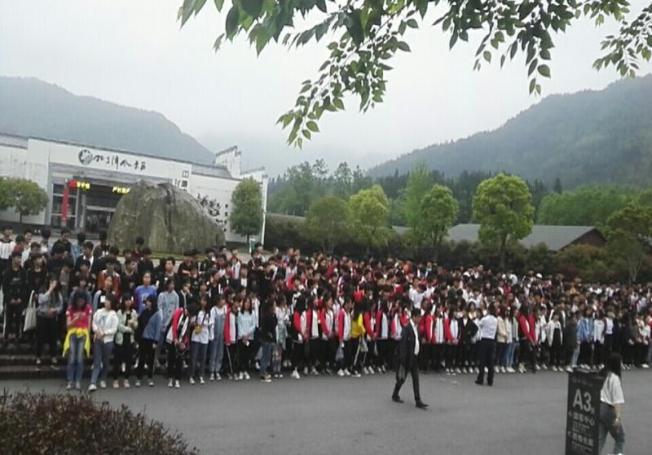

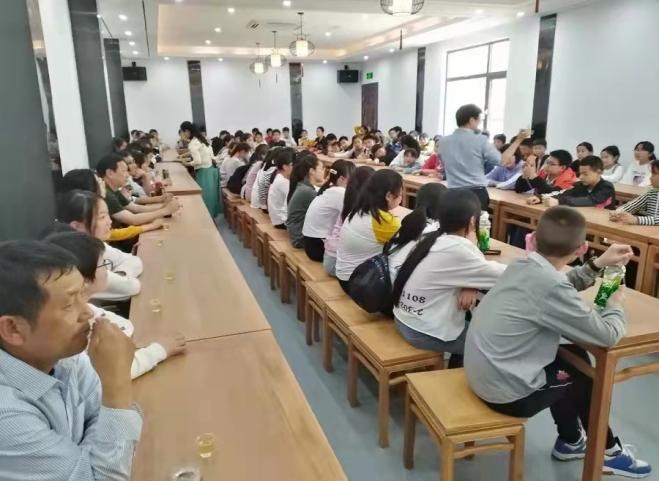
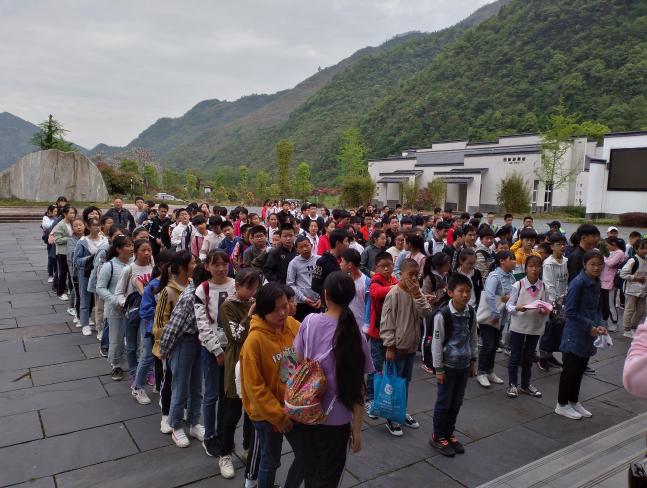


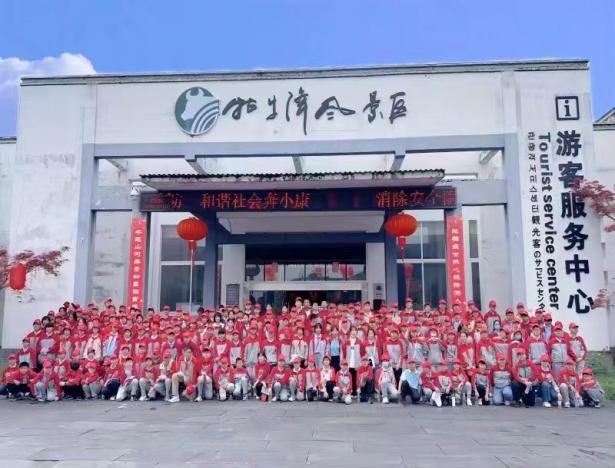
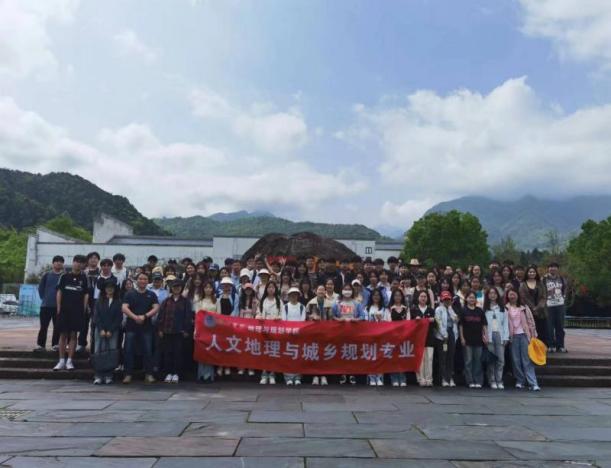
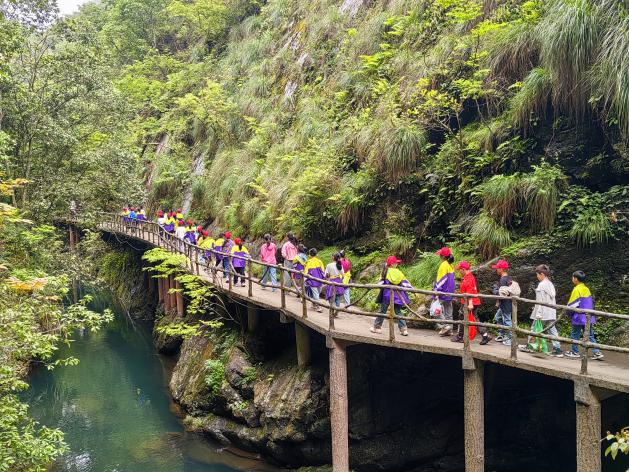


Research and study tours are a new teaching method and have received increasing attention in recent years. The Guniujiang Scenic Area in Shitie, Anhui is located in Shitie County in the southern part of Anhui Province, 20 kilometers away from the county seat of Shitie, Anhui. It is a comprehensive national nature reserve mainly focusing on forest ecosystems, which was approved by the State Council in 1988. It is called the "Green Natural Museum" by ecologists. In 2010, it was awarded as a national 4A-level scenic area. In 2017, it was designated as the first batch of provincial research and study tour practice bases by the Anhui Provincial Department of Education (document No. 83 of the Anhui Provincial Department of Education's Secretariat for Basic Education in 2017).

In 2020, it was approved as the first batch of municipal research and study practice education bases for primary and secondary school students in Chizhou City. The Guniujiang Scenic Area is reputed as the "Gene Bank of Animals and Plants in East China" and is affectionately called the "Green Natural Museum Without Walls" by ecologists. It has also been selected as the Scientific Investigation and Education Base for Chinese Youth. It is the top choice for many students' research and study trips.
Exploration of animals and plants
Guniujiang is the third highest peak in southern Anhui. The highest peak is 1,727.6 meters above sea level, and there are significant differences in soil properties. Looking from the bottom up, there are yellow-red soil zones, mountain yellow soil zones, mountain yellow-brown soil zones, and mountain meadow soil zones. Due to the differences in soil and altitude, the trees, flowers and plants that grow are also very different. However, it is precisely because of these differences that Guniujiang shows diversity and splendor. The soil provides favorable conditions for plant growth, and the soil also benefits from the coverage of forest vegetation and develops well, jointly maintaining the ecological balance of Guniujiang.

The Guniujiang in Shitie is a comprehensive national nature reserve mainly focusing on forest ecosystems, which was approved by the State Council in 1988. The total area of Guniujiang is 6,700 hectares. The vegetation coverage rate in the scenic area is as high as 98%, and it harbors a large number of biological species. According to statistics, there are 1,348 species of plants belonging to 726 genera in 230 families. There are a wide variety of biological species, among which 13 species of plants and 29 species of animals are under national key protection. The floristic components are complex and the ecological relationships are harmonious. It is a paradise for animals and plants and also a natural ecological museum. There are relict tree species that existed before the Tertiary Period, such as Chinese fir, Chinese yew, and Cephalotaxus fortunei. There are also 19 species of plants under national first-class, second-class and third-class protection, such as Liriodendron chinense, Emmenopterys henryi and Magnolia sieboldii.
Ginkgo biloba is a famous "living fossil" among plants. There are 29 species of animals under national first-class and second-class protection, such as clouded leopards, leopards and sika deer. In addition, there are abundant reptiles here. Among them, there are more than 26 species of snakes (such as Agkistrodon acutus and cobras), so it is called the "Kingdom of Snakes".
Geographical Changes
The Yanshan Movement between the Jurassic and Cretaceous periods laid the basic framework for the current landform of Guniujiang. During this period, the main peak of Guniujiang broke and uplifted again, accompanied by magma intrusion, forming the granite body of Guniujiang. Therefore, the mountains in Guniujiang are basically composed of this kind of rock. Of course, there are also quartz sandstone, slate, shale and so on. In the early crustal movements, some rock layers in Guniujiang fractured. As time passed, the stones on the rock layers fell off. After being scoured by water flow for a long time, countless stones of various shapes, sizes and as smooth as jade are scattered all over the river valleys in Guniujiang. The stones in Longmen Canyon have different postures and rich colors, with blackish-gray stones being the most numerous. They are metamorphic rocks. The main components of these stones are silicon dioxide and calcium carbonate, which are formed by the metamorphism of limestone. It can be said that they are carbonate substances that had been deposited in the Guniujiang area for a long time before it got rid of the encroachment of seawater.
Cultural Features
This place not only has an extremely beautiful ecological environment but also is renowned for producing outstanding people and has a profound cultural heritage. Wu Yingji, the leader of the Restoration Society in the late Ming Dynasty, a litterateur and a patriotic poet, once studied, sought knowledge, trained troops and resisted the Qing Dynasty here. Zheng Zhizhen, a great playwright in the Ming Dynasty, lived here and spent his entire life compiling the Mulian Opera "Mulian Rescues His Mother and Admonishes People to Do Good", which is hailed as a living fossil of Chinese drama. We can learn about the history of Yan Ziling, a hermit in the Eastern Han Dynasty, who refused to serve as an official in the imperial court. And in the history of the modern revolutionary struggle, the descendants of the Yan family adopted a positive attitude of "entering the world".
The Yan Family Ancient Village, the residence of the Yan family with a long history, is inhabited by the descendants of Yan Ziling, a hermit in the Eastern Han Dynasty. The village features white walls and gray tiles, and its layout presents the Huizhou style.

Not far away, there is an old house, which is the ancient mill. Inside it, there are stone mills and water-powered trip hammers. The stone mill is a tool that uses human power to grind grains into flour, while the water-powered trip hammer is a tool that utilizes water power to husk rice from paddy or process some other grain products. The old farm tool house is furnished with old-fashioned farm tools, such as plows, harrows, cultivators, spinning wheels, waterwheels, bailers and fans used for removing impurities from grains. Here, you can get to know the original farm tools, understand the history of farming and the process of agricultural development, as well as the long-standing agricultural civilization.


Pictures of previous research and study activities:













- Prev:Red culture
- Next:None


